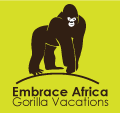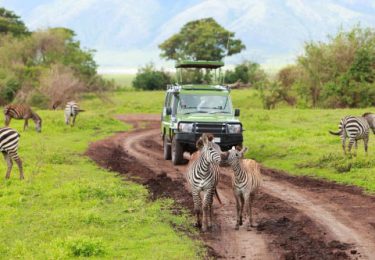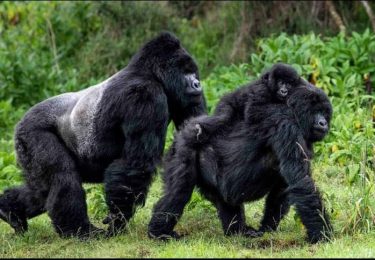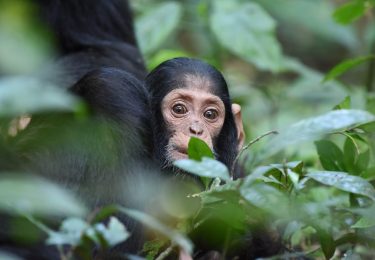- Home
- About Us
- Uganda safaris
- Long Safaris
- Short Safaris
- Day Short Safaris
- 1 Day Entebbe Botanical gardens weekend birding excursion
- I Day Entebbe City Tour
- 1 Day Jinja, Mabira, Ssezibwa Tour
- 1 Day Jinja Source of the Nile tour
- Lake Victoria Sunset Cruises
- 1 Day Kampala City Tour
- 1 Day Mabamba Shoebill Stork And Birding Tour
- 1 Day Makanaga Shoebill And Birding Trip
- 1 Day Ngamba Island Boat And Chimpanzee Excursion
- Other Tours
- Gorilla Safaris
- Uganda Gorilla safaris
- 4 Days Mgahinga Bwindi gorilla and golden monkey trekking safari
- 3 Days Mgahinga Gorilla trekking safari
- 5 Days Mgahinga Gorillas, Golden Monkey And Lake Bunyonyi Tour
- 5 Days Gorillas And Wildlife, L.Mburo, Bwindi and L. Bunyonyi
- 8 Days Wildlife, Gorillas, Golden Monkeys Trip
- 8 Days Gorillas Chimpanzee and wildlife Trekking Tour
- 9 Days Kidepo Valley National park and Bwindi Gorilla Safari. Wildlife and gorillas
- 11 Days Gorilla And Chimpanzee Tracking and wildlife Safari
- Rwanda Gorilla Safaris
- Uganda Gorilla safaris
- National Parks
- Kidepo Safaris
- Queen Elizabath Safaris
- Lake Mburo Safaris
- Mgahinga
- Mgahinga Gorilla National Park
- 3 Days Mgahinga Gorilla trekking safari
- 4 Days Mgahinga Bwindi gorilla and golden monkey trekking safari
- 5 Days Rwand-Uganda Gorilla, Golden Monkey trekking trip
- 5 Days Mgahinga Gorillas, Golden Monkey And Lake Bunyonyi Tour
- 8 Days Wildlife, Gorillas, Golden Monkeys Trip
- Our Blog
- Other Safaris
- Home
- About Us
- Uganda safaris
- Long Safaris
- Short Safaris
- Day Short Safaris
- 1 Day Entebbe Botanical gardens weekend birding excursion
- I Day Entebbe City Tour
- 1 Day Jinja, Mabira, Ssezibwa Tour
- 1 Day Jinja Source of the Nile tour
- Lake Victoria Sunset Cruises
- 1 Day Kampala City Tour
- 1 Day Mabamba Shoebill Stork And Birding Tour
- 1 Day Makanaga Shoebill And Birding Trip
- 1 Day Ngamba Island Boat And Chimpanzee Excursion
- Other Tours
- Gorilla Safaris
- Uganda Gorilla safaris
- 4 Days Mgahinga Bwindi gorilla and golden monkey trekking safari
- 3 Days Mgahinga Gorilla trekking safari
- 5 Days Mgahinga Gorillas, Golden Monkey And Lake Bunyonyi Tour
- 5 Days Gorillas And Wildlife, L.Mburo, Bwindi and L. Bunyonyi
- 8 Days Wildlife, Gorillas, Golden Monkeys Trip
- 8 Days Gorillas Chimpanzee and wildlife Trekking Tour
- 9 Days Kidepo Valley National park and Bwindi Gorilla Safari. Wildlife and gorillas
- 11 Days Gorilla And Chimpanzee Tracking and wildlife Safari
- Rwanda Gorilla Safaris
- Uganda Gorilla safaris
- National Parks
- Kidepo Safaris
- Queen Elizabath Safaris
- Lake Mburo Safaris
- Mgahinga
- Mgahinga Gorilla National Park
- 3 Days Mgahinga Gorilla trekking safari
- 4 Days Mgahinga Bwindi gorilla and golden monkey trekking safari
- 5 Days Rwand-Uganda Gorilla, Golden Monkey trekking trip
- 5 Days Mgahinga Gorillas, Golden Monkey And Lake Bunyonyi Tour
- 8 Days Wildlife, Gorillas, Golden Monkeys Trip
- Our Blog
- Other Safaris
SEMULIKI NATIONAL PARK

MURCHISON FALLS NATIONAL PARK
January 23, 2024
QUEEN ELIZABETH NATIONAL PARK
January 23, 2024A true birder’s haven whose other name is Semuliki National Park is located in the western part of Uganda, in Bwamba County, a remote part of Bundibugyo district on Uganda’s border with the Democratic Republic of Congo (DRC). It is surrounded with the Rwenzori Mountains in the southwest, Lake Albert in the north and lies within the Albertine Rift, western arm of the East African Rift not forgetting the two rivers on the park borders; river Semuliki and river Lamia.
The park was established in October 1993, on a flat to gently undulating landform that ranges from 670 to 760 meters above sea level with an area of 220 square kilometers of East Africa’s only lowland tropical rainforests. It is one of the richest areas of flora and fauna biodiversity in Africa, with butterfly and bird species being diverse. This is because it is extremely old, being one of a few patches of Refugia forest that predate the arid millennia of the last ice age; 12-18,000 years ago. In addition to this, Semuliki National Park represents the eastern limit of jungles in Congo and also species from East African biomes and Congo guinea. It’s also dominated by the easternmost extension of the great Ituri forest of the Congo Basin which is one of Africa’s most ancient and bio-diverse forests.
Semuliki National Park is famous for its pair of hot springs (male and female), locally known as the Sempaya hot springs which bubble up the depths to demonstrate the powerful subterranean forces that have been shaping the rift valley during the last 14 million years. The female hot spring local named Nyansimbi (meaning female ancestors in the local language) spurts out hot bubbling water which streams about 2 meters up in the air giving a magnificent view while the male hot spring locally named Biteete is in a diameter of 12 meters, located in a swampy clearing. The water from the female hot springs is too hot boiling at a temperature of 103⁰C which gives tourists an opportunity to boil food like eggs, meat, matooke and more. These hot springs are not only a striking reminder of the geologic forces that shaped the valley but also holding great cultural value in the area. The tales will be told to you by your guide who will be leading this activity.
The park has got a spectacular birdlife with a record of over 441 bird species recorded. The grassland and riverine habitat provide a safe haven for birds to stay. Semuliki National Park has over 46 Guinea-Congo forest biome species which are only found here in the whole East Africa. Species to see while here include; Blue-billed Malimbe, Black Dwarf Hornbill, African Piculet, Yellow-throated Nicator, Maxwell’s Black Weaver, Nkulengu Rail, Leaf-love, Piping Hornbill, Yellow-throated Cuckoo, Spot-breasted Ibis, Congo-Serpent Eagle, Chestnut-flaned Goshawk, Red-thighed Sparrow hawk, Long-tailed Hawk, Black-wattled Hornbill, Forest Ground Thrush, Purple-breasted Sunbird, White-tailed Hornbill, Lyre-tailed Honey guide, Nkulengu Rail, Blue-headed Crested Flycatcher, Capuchin Babbler, Orange Weaver, Sassi’s Olive Greenbul to mention a few. In addition to this, more than 300 butterfly species have been identifies including 46 species of forest swallowtail, charaxes, together with over 235 species of moth.
Semuliki is also a home to over 53 mammal species and out of these 27 are big animals. These mammals include; the two types of flying squirrels, fanged deer, pygmy antelope, forest elephant, buffalo, waterbucks, bush pigs, civets, leopards, sitatunga, little collard fruit bats, fire-footed rope squirrel, target rats, zenker’s flying mouse and more. You will also come across the hippos and crocodiles in the shallow waters of Semuliki River. Primates like chimpanzees, red-tailed monkey, baboon, vervet monkey, dent’s mona monkey, pottos, bush babies, grey-cheeked mangabey, black and white colobus, blue monkey, de Brazza’s and the Central African red colobus monkeys can also be found here.
The park borders the Semuliki and Lamia rivers which are watering places for a number of animals. Besides the Sempaya hot springs, Semuliki National Park has got two hot springs in the hot mineral encrusted swamp which attract a large number of water birds and also provide salt licks for a lot of animals. One of these hot springs is the Mumbuga spring which resembles a geyser by forming a 0.5 meters high foundation.
There are a number of ethnic groups who live near the park; the Bakonjo cultivators live on the slopes of Mount Rwenzori, the Bwamba who grow crops live along the base of the Rwenzori Mountain, the Batuku cattle keepers, who inhabit the open plains and lastly the Batwa pygmies who are traditionally hunter gathers that migrated from Ituri, live on the edge of the forest.
What to do at Semuliki National Park
Visiting the Hot springs
The Sempaya (male and female) hot springs are the top attractions that make Semuliki National Park famous. Come witness the powers and wonders of the earth as you see hot water bubbling from boiling geysers at a temperature of 103⁰C which gives tourists an opportunity to boil food like eggs, meat, matooke and more in the shortest time. You are not allowed to be too close to the hot springs due to their high boiling temperatures.
Guided nature walks
The park has got three major trails for the guided nature walks activity; the Sempaya trail, Kirumia trail and the Red monkey trail. The walks are led by a ranger who will take you to various tourist attractions. While on your guided nature walks, you will get to enjoy the beautiful sceneries, see a number of tree, bird, butterfly and mammal species.
Bird watching
The park is truly a birder’s haven with over 441 bird species recorded making it a perfect place for the bird watching activity so, don’t forget to carry for camera and binoculars. A knowledgeable guide will take you through this activity passing through the Sempaya and ntandi areas where you will comes across a number of bird species such as the Great blue turaco, Ross’s turaco, Black-wattled Hornbill, Forest Ground Thrush, Purple-breasted Sunbird, Blue-billed Malimbe, Black Dwarf Hornbill, African Piculet, Yellow-throated Nicator, Maxwell’s Black Weaver, Nkulengu Rail, Leaf-love, Piping Hornbill, Yellow-throated Cuckoo, Spot-breasted Ibis, Congo-Serpent Eagle, Chestnut-flaned Goshawk, White-tailed Hornbill, Lyre-tailed Honey guide, Nkulengu Rail, Blue-headed Crested Flycatcher, Capuchin Babbler, Orange Weaver, Sassi’s Olive Greenbul and others. For the water birds, you will be able to spot them while at the Kirumia River.
Best time to visit the park
Semuliki National Park can be visited throughout the year however; the best time to visit is during the dry season in the months of April to June and July to September. This is because it’s easier to drive through the park during the dry season because of less mud. The rainy season which is between the months of December to March and October to November cause difficulty navigating through the park and makes some parts of the park flooded as the rains fill up the rivers.
How to get there
Semuliki National Park can be accessed from two major roads from Kampala; one can use the shorter Kampala to Fort Portal road via Mubende which is approximately (4-5 hours’ drive) or use the longer route from Kampala to Fort Portal via Masaka, Mbarara, Kasese which is approximately (7-8 hours’ drive). The only route offers opportunity of seeing other national parks like Lake Mburo National Park, Queen Elizabeth National park and the Mount Rwenzori National Park.





